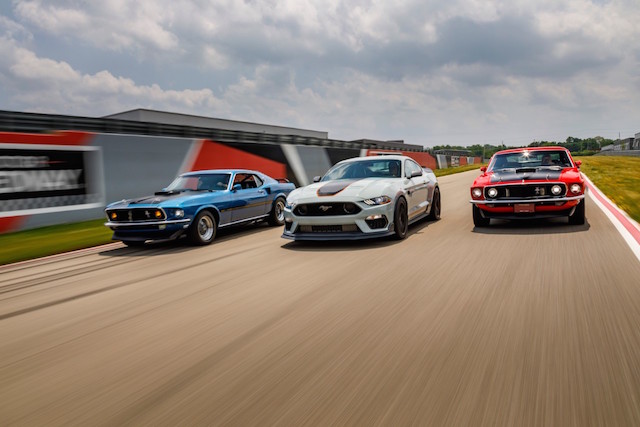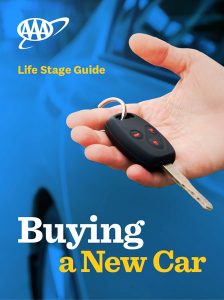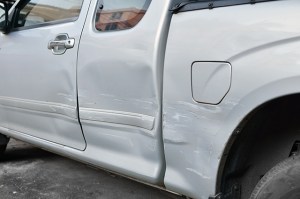Car colors have historically been dictated by current events, the national mood, technology and cultural influences, resulting in decades of brilliant shades. More recent times, however, have seen muted tones become the most popular car colors.
A look back in history shows us how we got to the common car colors we have today.
The History of Car Paint Begins
Any customer can have a car painted any color that he wants, so long as it is black.
Henry Ford
Automobiles in the late 1800s and early 1900s were essentially motorized carriages, and so they were painted just like their transportation predecessors. This meant using oil-based paint applied by hand. Most cars were painted black because the color was durable, cheap and dried quickly.
But there were problems with both the color and the application of early car paint. Even though it provided a luxurious, brilliant finish, painting a car took weeks to complete. In addition, the black paint would often fade or yellow. Since the paint had no binding agent, when discoloration occurred, the car had to be repainted, which cost money.
Despite Henry Ford’s famous words, not all Model Ts were painted black. In fact, from 1908 to 1914, the car came in several different colors. But when Ford implemented the assembly line manufacturing process, he needed a paint that dried quickly, thus the switch to black.

Duco Paint
A major milestone in the evolution of car paint history occurred in the 1920s when the DuPont company developed a new type of automotive coating. DuPont scientists modified nitrocellulose, a substance used to make explosives and motion picture film, to create a low-viscosity lacquer that could be sprayed onto automobiles. This new paint, dubbed Duco, had numerous benefits over previous versions of car paint.
According to the Science History Institute, “Traditional varnishes chipped, cracked, crazed and faded; Duco lacquer was almost invincible. It tolerated air, sun, rain, mud, dampness, heat, cold, salt water, bacteria, perspiration, dirt, soaps and detergents. Most low-end finishes came in few colors, while Duco made available a rainbow of hues.”
General Motors was the first manufacturer to adopt Duco (at the time, GM and DuPont were under the same leadership). GM’s Oakland Motor Car Company painted its cars with two different shades of blue and a red or orange racing stripe, and debuted them at the 1923 New York Auto Show. The colors were an immediate hit with the public and by the mid-1920s all GM divisions were using Duco.
Car Color in the Roaring ’20s
The economic boom of the 1920s saw the rise of automobile ownership, which invited a broader spectrum of car colors and a variety in shades. Although the Great Depression reduced the abundance of colorful vehicles, it didn’t deter the evolution of car paint.
In the 1930s, newly created metallic paint gave vehicles an improved sheen. (Automobiles were also becoming less box-like, and the new paint helped enhance the curved forms.) Metallic paint was first made using real fish scales. It took 40,000 herring to make one kilo of paint, according to Consumer Reports. Less expensive versions of the paint used aluminum flakes instead.
Post-War Car Paint
The end of World War II saw a boom in consumption and style, with automobiles at the forefront. By this time nearly all the large automakers had color advisory panels that surveyed consumers’ tastes and studied color trends in fashion and culture. Cars became flashier with features like tail fins, curved windshields and, of course, bright colors. In addition to the copious amounts of chrome, automobiles were painted in all shades of the rainbow. Two-tone arrangements, where a car’s body and roof were painted different colors, also became popular.
The color trend continued well into the 1960s with the emergence of muscle cars. These cars have always been more about performance than pragmatism, lending themselves as better canvases for brightly colored paints.
The color trend came to a quick halt during the fuel shortage of the 1970s. During this time, car owners became more concerned with fuel efficiency and car color took a back seat. Earth tones like brown, tan and dark green became popular.
What Is the Most Popular Car Color Today?
The current color situation on United States’ roadways is not very colorful at all. “If you drove down an American street and looked only at the new vehicles, you might be forgiven for thinking you’re in a black-and-white movie,” described Volkswagen.
No one can argue with the truth. A recent study on popular car colors by iSeeCars found that 25.8% of the 6.1 millions vehicles analyzed were white and 22.3% were black. Even more sobering if you’re a fan of colorful hues is that the next two most popular paint colors, at 18.4% and 12.1%, were gray and silver. This isn’t an anomaly: These have been the most common car colors for a decade.
Why Are Muted Tones the Most Popular Car Colors?
It wasn’t too long ago, from the 1950s through the 1970s, when U.S. roadways were filled with automobiles of all shades of the color spectrum. So why the change? “Color is always shifting, and our color perception is always evolving depending on what we see, what we observe and what we live with,” said Volkswagen Senior Color and Trim Designer Jung Lim “Limmy” Park. “Color preferences really reflect the unique social and cultural trends and even geography [of a region].”
There are a number of social and cultural theories as to the prevalence of more somber car colors in America. We are currently living through the second significant recession in about a decade. During times of economic uncertainty people tend to be conservative with their money. And while a different color on your car may not increase its cost, the mindset of keeping things simple and avoiding anything flashy has been known to carry over. A similar trend occurred following the Great Depression nearly a century ago.
As for cultural influences, there are some that suggest our car color choices are defined by our obsession with technology. Apple is the world’s most valuable company and its muted-color logo is recognized around the world. “Prior to Apple, white was associated with things like refrigerators or the tiles in your bathroom,” Sandy McGill, chief designer for BMW DesignWorks told Motoramic.com. “Apple made white valuable.”

The Right Car Color for the Right Car
There’s also always been a belief that certain colors are right for certain cars. Pickup trucks are more utilitarian and don’t need a neon coating. Luxury sports car, meanwhile, are made to get people’s attention and are likely a more acceptable place for a bright-yellow coat of paint.
But sports cars haven’t been immune to the colorless trend. The Ford Mustang is a perfect example. In 1967, the muscle car was available nine shades of blue and two shades of pink. In the 1970s, brown was consistently among the top three most popular Mustang colors, but hasn’t been offered since 2000. Black, on the other hand, didn’t break into the top three until 1994 but has remained there ever since.
What Will Be the Most Popular Car Colors Moving Forward?
No one can predict the future, but we do know that trends change. As long as the demand for new colors is there, the supply will come with it.
There’s another reason to be hopeful for more vivid roadways. We view so much of our lives through the sharp, brightly colored images on our electric devices that it wouldn’t be surprising to see other shades pop up on cars in the near future. “We are all so impacted by our digital life through the pandemic, and the colors you mainly see are [on] your screen more than actual physical objects,” said Volkswagen’s Park. “The future is getting colorful, for sure.”
What color is your car? What colors would you like to see brought back? Let us know in the comments below.
If you want to try cars in all the colors of the rainbow, you can use your AAA membership to get a discount on Hertz car rentals.
Get more automotive history.
252 Thoughts on “Why Are Popular Car Colors So Boring? A Brief History of Car Paint”
Leave A Comment
Comments are subject to moderation and may or may not be published at the editor’s discretion. Only comments that are relevant to the article and add value to the Your AAA community will be considered. Comments may be edited for clarity and length.


















I have a white car because that is the color that was available. I would love to have a pretty blue or some other “lively” color. Most car colors are wimpy and boring, Made this comment to the manufacturer but they never answered me.
I’m a child of the 60’s…cars were so beautiful, colorful and identifiable!! Misty (my 1970 Chevelle) is Misty Turquoise with black stripes. 1998 Ranger Splash is a candy red metallic. 1995 Neon is, well…black as is my 1999 Silverado stepside. So I’m only semi-boring?
Nice to see so many people wishing for bright colors or pastels instead of shades of gray (incl. white and black) I’m with you 100%.
My car colors since my first car: green (‘52Chevy used car) Then bronze/copper (my first new car, after college graduation), then orange (during the gas crisis). After that colors were hard to find but there was alway a version of red. So my last 3 cars were what I like to call Candy Apple Red. Can’t wait to see more of every color and style on the road.
It’s fascinating that the mindset of saving money can turn people off to more exciting colors on their cars even though the price is the same. My car has a light silver look to it, but I’ve always thought it was a bit too bland for my taste. I’m considering taking it to a body shop and having the paint job changed to a nice green.
My 2019 Chili Pepper Red Ford Ranger pickup stands out and really pops with blackout trim and wheels. I’ve always loved red trucks and SUV’s
My 1998 Isuzu Rodeo (RIP) was a gorgeous shade of medium-dark bluish green metallic that changed continuously with the available light and observation angle. It ranged from teal to spruce green and I’d love to have that color on any new car today.
The fact that the only cars now available are the ones on the dealers lot has much to do with the color you get. Up until the late 1990’s most cars were ordered and one was able to select most of the equipment desired. Most cars on the lot were “stripped” with few accessories. So, in addition to ordering the mechanics of your car, you could order your color from all the many colors the manufacturer offered. Today, it is the car dealers inventory that determines your color choice. When you view technicolor movies on TV from the 1950’s through 1970’s you can see how great all those different colored cars look.
I have a 2017 Chevy Impala. I rarely ever see one on the road that isn’t silver. Hard to find one that isn’t. The only consolation is that silver is considered the best “dirt color”. Also liked the comment on black interior- hate it! Very popular however. Happy with my gray leather seats and trim.
I have four different show cars and attend shows regularly. One is a silver C5 Corvette which I attend shows with the most. Everything being equal, if a C5 torch red Corvette was in the show it would win out. The red is a more eye catching appealing car color at first glance while the silver is more subdued.
It’s not accurate to talk about which colors are popular with the consumer. It’s the manufacturers that limit the choices, as many have mentioned in previous comments. I also noticed that the available colors vary in different parts of the US. When I bought a silver Prius in New York, silver was pretty much all you would see here. when I visited California, it seemed that almost all of the Priuses there were black. I had never seen a black one here.
Beautiful paint jobs needed! Choose the car and get it painted exactly as you want it! More quality paint shops needed. Start running specials for new cars. Help! ⭐⭐⭐⭐⭐
I have a red Malibu 2014, not orange red, and I love this car. It has 75,000 miles, sun roof, huge trunk, auto stop, great ride, power, beauty, and terrific paint finish. People ask me how old is the car, because they think it is new – because it has still got that great appearance. Thanks, Chevrolet!
I’d like to see all car manufacturers go back to having colorful interior to match the exterior of the car. A color coordinated interior really brings out the exterior design of the car. It also allows the car owner to put more pride and ownership into polishing and keeping the beautiful inside and out. Technology is fine in today’s cars, I would prefer the technology is installed to keep the automobiles from breaking down, and not be the distraction it’s beginning to be known for in learning all the nuances of mastering each function.
My favorite car was my electric blue 2002 Cavalier, owned for 17 years till it finally disintegrated like the Blues Brothers’ car at the end of the movie. And my other car is a Toreador Red Taurus, owned for 21 years now and still going strong. I love the colors on my cars!
I so agree with everyone. We need many more choices. I would love to have a Hunter Green car. I even like olive green. Also a nice burgundy color. Also why not more interior colors. Nothing like a pretty Burgundy outside with a white interior.
I rented a purple car while on vacation in CA years ago. We called it ” the purple grape”. My family thought I’d lost it. My reply was, I won’t have any trouble trying to find my rented car anywhere that I park it. We need color in our world!
I rented a purple car while on vacation in CA years ago. We called it the purple grape. My family thought I’d lost it. My reply was, I won’t have any trouble trying to find my rented car anywhere that I park it. Have never seen a purple car since. They are all dull and boring. We need color in our world!
Sorry, but I am really not impressed with some of the new weird easter egg colored paint jobs on cars and trucks today. And the glossy drab lack of metallic burst is so unappealing to say the least. I see cars in aqua, beige, drab primer colored gray, yellow, and they are just plain ugly. When did the trend into these new weird glossy colors hit us? What happened to the awesome metallic lusters. I will be in the market for a new vehicle in September but I will not buy a car that has these ugly glossy weird new hues that simply unattractive.
This was an excellent, well-researched article.
I have a metallic blue car and it’s my baby.
I’m a convertible lover and a baby boomer. I would love to see the return of British racing green with a tan cloth top or navy with a navy or tan top. Hey, hate to say it but silver with a navy top would also look great! Sadly not many car makers are offering cloth tops anymore, and if they do black is the only color choice. Audi A 5 has been my choice the past 10 years as it’s still one of the few cloth top convertibles available; but unfortunately color choices are minimal! ;-((